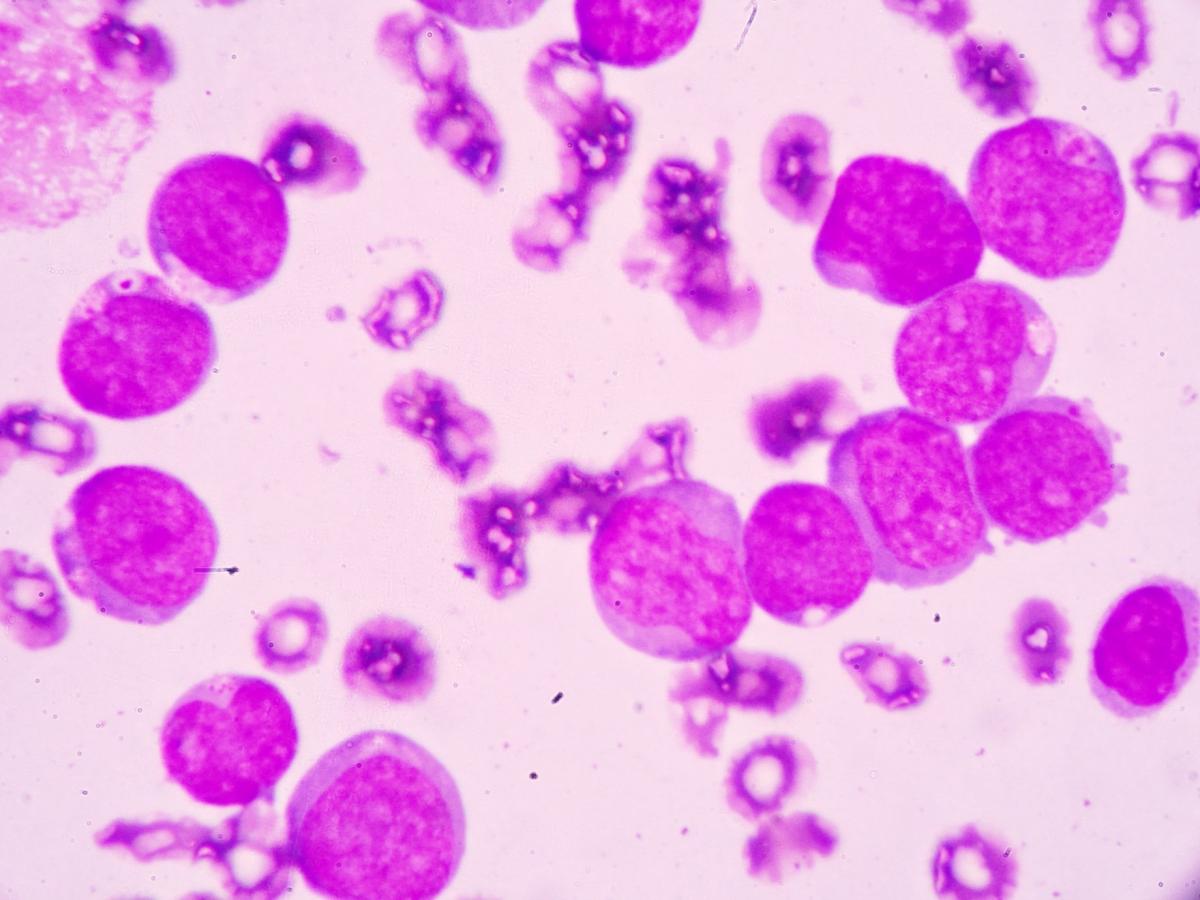New therapy could help chronic myeloid leukemia patients live drug-free

Chronic myeloid leukaemia cells under the microscope
The latest research from the University of Adelaide and the South Australian Health and Medical Research Institute (SAHMRI) has discovered a potential new therapy for chronic myeloid leukemia (CML) patients who’ve achieved excellent results from current treatment and are hoping to live life medication free.
The study, co-led by Dr Yazad Irani and published in the journal Blood Advances, is the first comprehensive evaluation of immune checkpoint receptors in CML patients at the time of stopping their usual therapy with tyrosine kinase inhibitors, which specifically target leukaemia cells.
"This finding provides a crucial stepping-stone for more CML patients to progress towards getting off drugs completely," Dr Irani said.
The findings highlight the key role a protein known as ‘TIM-3’ plays in CML relapse. TIM-3 is responsible for regulating the activity of T cells, which help identify and destroy cancer cells.
High levels of TIM-3 were linked to decreased immune function and increased risk of relapse in CML patients who attempted to stop their tyrosine kinase inhibitors. Dr Irani says blocking the TIM-3 protein may be the missing piece of the puzzle.
“Some CML patients are able to successfully remain off-drug and cancer-free after stopping therapy, while others experience relapse and we do not fully understand why,” Dr Irani said.
“We found patients who relapsed had higher levels of TIM-3 inhibiting immune cells, compared to patients who remained off-drug. If we can block TIM-3 protein from functioning, more patients may be able to live drug-free.”
"This finding provides a crucial stepping-stone for more chronic myeloid leukemia patients to progress towards getting off drugs completely." Dr Yazad Irani
Researchers are optimistic these findings will inspire further work in the field and lead to what could effectively become a long-term cure for CML.
The next step will involve clinical trials to test the efficacy of blocking TIM-3 in humans.
Media contact
Lee Gaskin, Media Coordinator, the University of Adelaide. Mobile: +61 (0)415 747 075. Email: lee.gaskin@adelaide.edu.au
